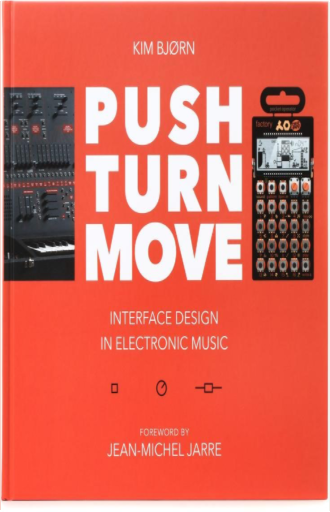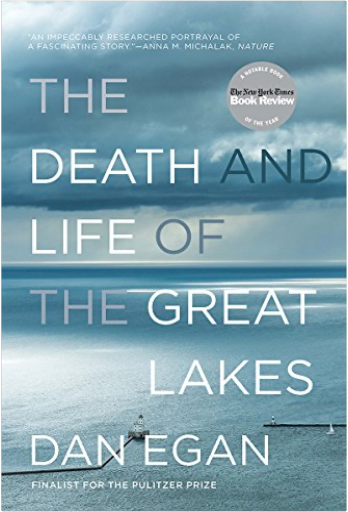 The Death and Life of the Great LakesDan Egan The Death and Life of the Great LakesDan Egan New York Times Bestseller
Winner of the Los Angeles Times Book Prize
Winner of the J. Anthony Lukas Award
"Nimbly splices together history, science, reporting and personal experiences into a taut and cautiously hopeful narrative.… Egan’s book is bursting with life (and yes, death)." ―Robert Moor, New York Times Book Review
The Great Lakes―Erie, Huron, Michigan, Ontario, and Superior―hold 20 percent of the world’s supply of surface fresh water and provide sustenance, work, and recreation for tens of millions of Americans. But they are under threat as never before, and their problems are spreading across the continent. The Death and Life of the Great Lakes is prize-winning reporter Dan Egan’s compulsively readable portrait of an ecological catastrophe happening right before our eyes, blending the epic story of the lakes with an examination of the perils they face and the ways we can restore and preserve them for generations to come. 20 illustrations, maps 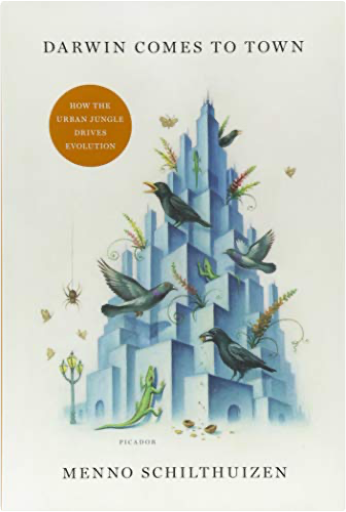 Darwin Comes to Town: How the Urban Jungle Drives EvolutionMenno Schilthuizen Darwin Comes to Town: How the Urban Jungle Drives EvolutionMenno Schilthuizen *Carrion crows in the Japanese city of Sendai have learned to use passing traffic to crack nuts.
*Lizards in Puerto Rico are evolving feet that better grip surfaces like concrete.
*Europe’s urban blackbirds sing at a higher pitch than their rural cousins, to be heardover the din of traffic.
How is this happening?
Menno Schilthuizen is one of a growing number of “urban ecologists” studying how our manmade environments are accelerating and changing the evolution of the animals and plants around us. In Darwin Comes to Town, he takes us around the world for an up-close look at just how stunningly flexible and swift-moving natural selection can be.
With human populations growing, we’re having an increasing impact on global ecosystems, and nowhere do these impacts overlap as much as they do in cities. The urban environment is about as extreme as it gets, and the wild animals and plants that live side-by-side with us need to adapt to a whole suite of challenging conditions: they must manage in the city’s hotter climate (the “urban heat island”); they need to be able to live either in the semidesert of the tall, rocky, and cavernous structures we call buildings or in the pocket-like oases of city parks (which pose their own dangers, including smog and free-rangingdogs and cats); traffic causes continuous noise, a mist of fine dust particles, and barriers to movement for any animal that cannot fly or burrow; food sources are mainly human-derived. And yet, as Schilthuizen shows, the wildlife sharing these spaces with us is not just surviving, but evolving ways of thriving.
Darwin Comes toTown draws on eye-popping examples of adaptation to share a stunning vision of urban evolution in which humans and wildlife co-exist in a unique harmony. It reveals that evolution can happen far more rapidly than Darwin dreamed, while providing a glimmer of hope that our race toward over population might not take the rest of nature down with us. 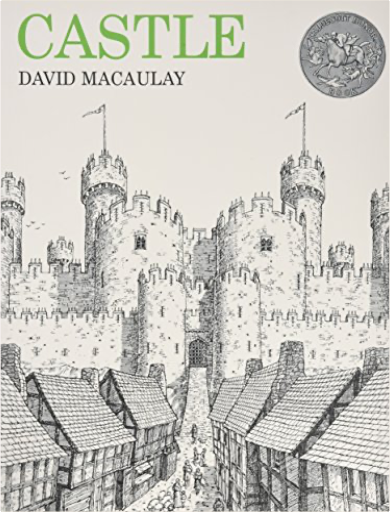 CastleDavid Macaulay CastleDavid Macaulay The word itself conjures up mystery, romance, intrigue, and grandeur. What could be more perfect for an author/illustrator who has continually stripped away the mystique of architectural structures that have long fascinated modern man? With typical zest and wry sense of humor punctuating his drawings, David Macaulay traces the step-by-step planning and construction of both castle and town. 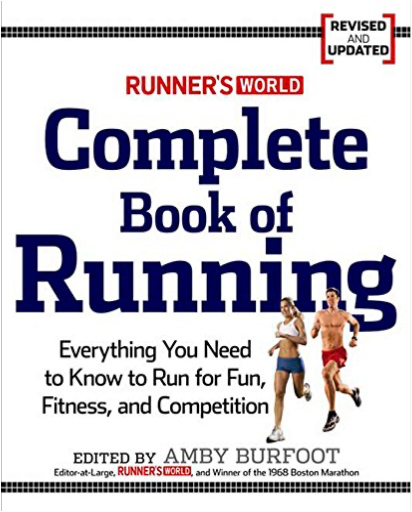 Runner's World Complete Book of Running: Everything You Need to Run for Weight Loss, Fitness, and CompetitionAmby Burfoot Runner's World Complete Book of Running: Everything You Need to Run for Weight Loss, Fitness, and CompetitionAmby Burfoot The sport of running is ever changing, be it the shoes we wear or the goals we set, the training methods we use or the role models we emulate. But there is one constant: For 40 years, Runner's World magazine has been recognized worldwide as the leading authority on running. Now the collective wisdom of the most savvy running writers, coaches, and editors can be found in the Runner's World Complete Book of Running.
Whether you are a beginner or veteran runner, here is advice—both timeless and cutting-edge—guaranteed to maximize your performance and enjoyment. Inside you'll find in-depth coverage of training and racing including:
• A surefire plan to get beginners hooked on running
• 15 surprising foods to boost your running performance
• A proven plan to increase speed by training less
• Tips from triathletes to maximize your training efficiency
• A woman's encyclopedia of running
• The big five running injuries and how to prevent them
• An innovative running plan for weight-loss
• Cross-training exercises that strengthen your core
• How to train for your first half-marathon
• Mental training tips for running a smart marathon
Packed with valuable advice from running's top experts on everything from building strength, speed, and endurance to nutrition and injury prevention, the Runner's World Complete Book of Running is the book you'll turn to again and again to answer all of your running questions.  Walkable City Rules: 101 Steps to Making Better PlacesJeff Speck Walkable City Rules: 101 Steps to Making Better PlacesJeff Speck “Cities are the future of the human race, and Jeff Speck knows how to make them work.”
—David Owen, staff writer at the New Yorker
Nearly every US city would like to be more walkable—for reasons of health, wealth, and the environment—yet few are taking the proper steps to get there. The goals are often clear, but the path is seldom easy. Jeff Speck’s follow-up to his bestselling Walkable City is the resource that cities and citizens need to usher in an era of renewed street life. Walkable City Rules is a doer’s guide to making change in cities, and making it now.
The 101 rules are practical yet engaging—worded for arguments at the planning commission, illustrated for clarity, and packed with specifications as well as data. For ease of use, the rules are grouped into 19 chapters that cover everything from selling walkability, to getting the parking right, escaping automobilism, making comfortable spaces and interesting places, and doing it now!
Walkable City was written to inspire; Walkable City Rules was written to enable. It is the most comprehensive tool available for bringing the latest and most effective city-planning practices to bear in your community. The content and presentation make it a force multiplier for place-makers and change-makers everywhere.  The BookAmaranth Borsuk The BookAmaranth Borsuk The book as object, as content, as idea, as interface.
What is the book in a digital age? Is it a physical object containing pages encased in covers? Is it a portable device that gives us access to entire libraries? The codex, the book as bound paper sheets, emerged around 150 CE. It was preceded by clay tablets and papyrus scrolls. Are those books? In this volume in the MIT Press Essential Knowledge series, Amaranth Borsuk considers the history of the book, the future of the book, and the idea of the book. Tracing the interrelationship of form and content in the book's development, she bridges book history, book arts, and electronic literature to expand our definition of an object we thought we knew intimately.
Contrary to the many reports of its death (which has been blamed at various times on newspapers, television, and e-readers), the book is alive. Despite nostalgic paeans to the codex and its printed pages, Borsuk reminds us, the term “book” commonly refers to both medium and content. And the medium has proved to be malleable. Rather than pinning our notion of the book to a single form, Borsuk argues, we should remember its long history of transformation. Considering the book as object, content, idea, and interface, she shows that the physical form of the book has always been the site of experimentation and play. Rather than creating a false dichotomy between print and digital media, we should appreciate their continuities. 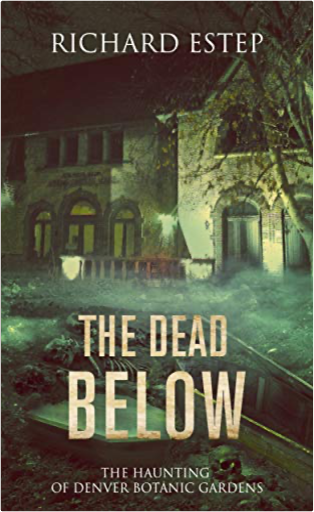 The Dead Below: The Haunting of Denver Botanic GardensRichard Estep The Dead Below: The Haunting of Denver Botanic GardensRichard Estep They moved the headstones, but they never moved the bodies...
Built on top of the old city cemetery, Denver Botanic Gardens sits upon thousands of unrecovered human remains. Small wonder, then, that visitors and staff alike have reported all manner of ghostly activity, ranging from disembodied voices, cold spots, and phantom footsteps, to shadow figures and full-bodied apparitions.
Are the spirits of the restless dead making their presence known to the living? Join paranormal investigator Richard Estep, of TV's 'Haunted Case Files,' 'Haunted Hospitals,' and 'Paranormal 911,' as he and a small team of dedicated researchers are locked down inside Denver Botanic Gardens in an attempt to uncover the truth for themselves.  Alcoholics Anonymous, 4th EditionA.A. World Services Inc Alcoholics Anonymous, 4th EditionA.A. World Services Inc Originally published in 1939, when A.A. membership numbered about one hundred, Alcoholics Anonymous has steadily grown in readership. By the time the second edition appeared in 1955, membership had reached over 150,000, and the Big Book, A.A. members’ fond title for their basic text, had reached a distribution of more than 300,000. At the time of the third edition, in March 1976, the worldwide membership of A.A. was estimated at 1 million or more. The basic text, pages 1-164, which had been the foundation of recovery for so many alcoholics remained, and still remains, unchanged. The General Service Conference-approved fourth edition of Alcoholics Anonymous was first printed in October 2001 and has been reprinted 30 times since then. This edition includes 24 new stories that provide contemporary sharing for newcomers seeking recovery from alcoholism in A.A. during the early decades of the 21st century. Sixteen stories are retained from the third edition, including the “Pioneers of A.A.” section, which helps the reader remain linked to A.A.’s historic roots and shows how alcoholics get sober today. More than 30 million copies of the first four editions of the Big Book have been distributed. This is the only A.A.W.S.-authorized e-book version of Alcoholics Anonymous. 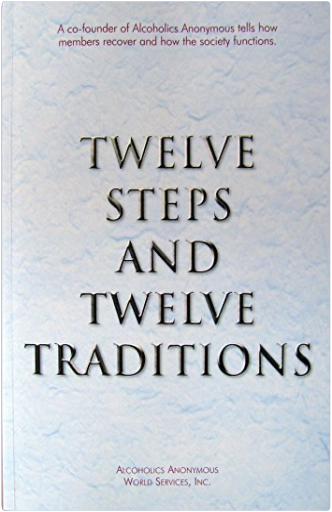 Twelve Steps and Twelve TraditionsAlcoholics Anonymous Twelve Steps and Twelve TraditionsAlcoholics Anonymous Originally published in 1952, this classic book is used by A.A. members and groups around the world. It lays out the principles by which A.A. members recover and by which the fellowship functions. The basic text clarifies the Steps which constitute the A.A. way of life and the Traditions, by which A.A. maintains its unity. 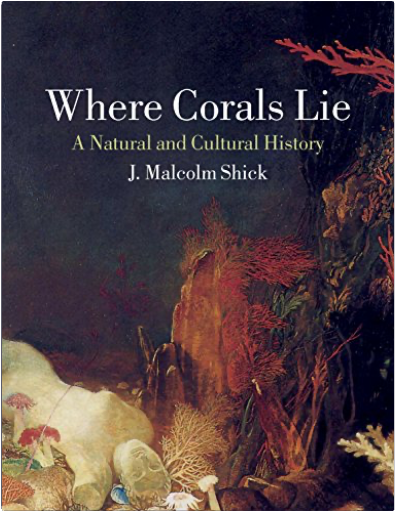 Where Corals Lie: A Natural and Cultural HistoryJ. Malcolm Shick Where Corals Lie: A Natural and Cultural HistoryJ. Malcolm Shick For millennia, corals were a marine enigma, organisms that confounded scientific classification and occupied a space between the animal and plant kingdoms. Our cultural relationships with coral have been similarly ambiguous. The danger posed by unseen underwater reefs led to an association of coral with death and interment that has figured in literature, poetry, music, and film, while the bright redness of precious Mediterranean coral was associated in European and Indian mythology with its origins in blood and gore. And yet, coral skeletons have long been prized as jewelry and ornament, featuring prominently in Renaissance cabinets of curiosities. Opening the door onto these most peculiar of animals, this unique book treats the many manifestations of coral across biology, geology, and culture.
Today, the tide of danger flows in reverse. Seen as rainforests of the sea, coral reefs have become emblematic of the fragility of marine biodiversity, their declining health a warning sign of the human-driven climate change that has produced warming seas, ocean acidification, and rising sea levels. Looking at corals as builders of islands and protectors of coastlines, as building materials themselves, as well as at the myriad ways in which diverse corals have come to figure in art, medicine, folklore, geopolitics, and international trade, Where Corals Lie reveals how the threatening has become threatened—and of the danger this poses to humans. Exceptionally embellished with a wide range of biological illustrations, underwater photography, and fine art, Where Corals Lie is a beautiful and informative resource for anyone interested in ocean environments and the cultures that flourish or fail there. 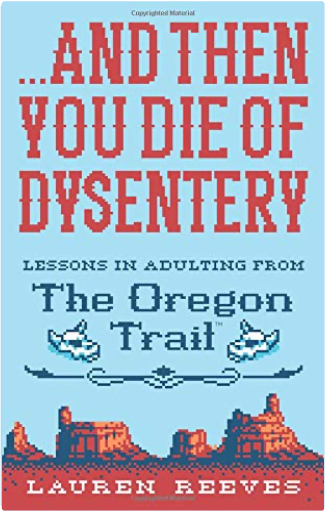 ...And Then You Die of Dysentery: Lessons in Adulting from the Oregon TrailLauren Reeves ...And Then You Die of Dysentery: Lessons in Adulting from the Oregon TrailLauren Reeves A quirky, nostalgic send-up to the Oregon Trail computer game, featuring snarky and hard-earned life lessons from the trail.
Pack your wagons, find your ride-or-(literally) die friends, and roll up to Matt’s General Store with a sack of cash—it’s time to hit the Oregon Trail, twenty-first-century style! …And Then You Die of Dysentery is the perfect send-up to the sometimes frustrating, always entertaining, and universally beloved Oregon Trail computer game. Featuring a four-color design in the game’s iconic 8-bit format, alongside pop culture references galore, the book offers 50 humorous, snarky lessons gleaned from the game’s most iconic moments, including gems such as:
—Suffering from exhaustion is a real thing. (It’s not just PR code for why a celebrity went to rehab.)
—If you hunt too frequently in one area, game will become scarce. (The first signs of gentrification!)
—Invite your sweetie to cuddle with you while looking up at the stars. (The night sky was the original Netflix & Chill. Step 1: Loosen up Orion’s belt...)
With its laugh-out-loud commentary and its absurdist nostalgia, ...And Then You Die of Dysentery is the ultimate trip down memory lane … all the way to the Willamette Valley. |
 The Death and Life of the Great LakesDan Egan
The Death and Life of the Great LakesDan Egan  Darwin Comes to Town: How the Urban Jungle Drives EvolutionMenno Schilthuizen
Darwin Comes to Town: How the Urban Jungle Drives EvolutionMenno Schilthuizen  CastleDavid Macaulay
CastleDavid Macaulay  Runner's World Complete Book of Running: Everything You Need to Run for Weight Loss, Fitness, and CompetitionAmby Burfoot
Runner's World Complete Book of Running: Everything You Need to Run for Weight Loss, Fitness, and CompetitionAmby Burfoot  Walkable City Rules: 101 Steps to Making Better PlacesJeff Speck
Walkable City Rules: 101 Steps to Making Better PlacesJeff Speck  The BookAmaranth Borsuk
The BookAmaranth Borsuk  The Dead Below: The Haunting of Denver Botanic GardensRichard Estep
The Dead Below: The Haunting of Denver Botanic GardensRichard Estep  Alcoholics Anonymous, 4th EditionA.A. World Services Inc
Alcoholics Anonymous, 4th EditionA.A. World Services Inc  Twelve Steps and Twelve TraditionsAlcoholics Anonymous
Twelve Steps and Twelve TraditionsAlcoholics Anonymous  Where Corals Lie: A Natural and Cultural HistoryJ. Malcolm Shick
Where Corals Lie: A Natural and Cultural HistoryJ. Malcolm Shick  ...And Then You Die of Dysentery: Lessons in Adulting from the Oregon TrailLauren Reeves
...And Then You Die of Dysentery: Lessons in Adulting from the Oregon TrailLauren Reeves  Made with Delicious Library
Made with Delicious Library
